Scientist cracks cause of ‘Pharaoh’s curse’ that killed more than 20 people who opened King Tutankhamun’s tomb in 1922
A scientist claims to have found the cause of the ‘curse of the Pharaoh’, which reportedly killed more than twenty people who opened King Tutankhamun’s tomb in 1922.
An ancient Egyptian text threatens ‘death from a disease that no doctor can diagnose’ for anyone who disturbs royal mummified remains – but Ross Fellowes has suggested there was a biological reason behind the deaths.
The investigation found that the cause was radiation poisoning from natural elements containing uranium and toxic waste that were deliberately placed in the locked safe.
Exposure could have led to certain cancers, such as the cancer that killed archaeologist Howard Carter – the first person to walk into Tut’s tomb more than 100 years ago.
A scientist claims to have solved the case of the ‘curse of the Pharaoh’, which was believed to have killed more than twenty people who opened King Tutankhamun’s tomb in 1922
Carter died in 1939 likely of a heart attack after a long battle with Hodgkin’s lymphoma, which attacks the body’s germ-fighting immune system — and radiation poisoning has been linked as a cause of the cancer.
Lord Carnarvon, one of the men who also walked through the preciously filled rooms, died of blood poisoning five months after the discovery.
He suffered a serious mosquito bite, which became infected after a razor blade bite.
Shortly after the tomb was opened, there was a brief power outage and all the lights in all of Cairo went out.
Carnarvon’s son also reported that his favorite dog howled and suddenly dropped dead.
Other people involved in the dig died of asphyxiation, stroke, diabetes, heart failure, pneumonia, poisoning, malaria and exposure to X-rays – all died in their 50s.
British Egyptologist Arthur Weigall attended the opening of Tut’s tomb, where he was accused of inciting the ‘myth’ of the curse – he died of cancer at the age of 54.
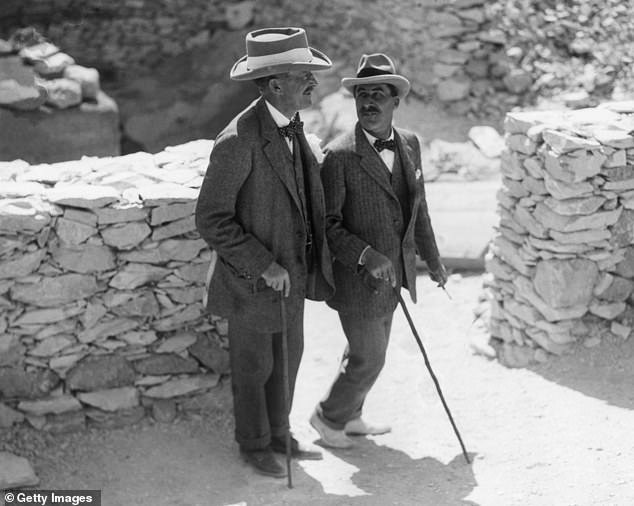
It has long been said that Lord Carnarvon (left) and Howard Carter (right) died because of the Pharaoh’s cures
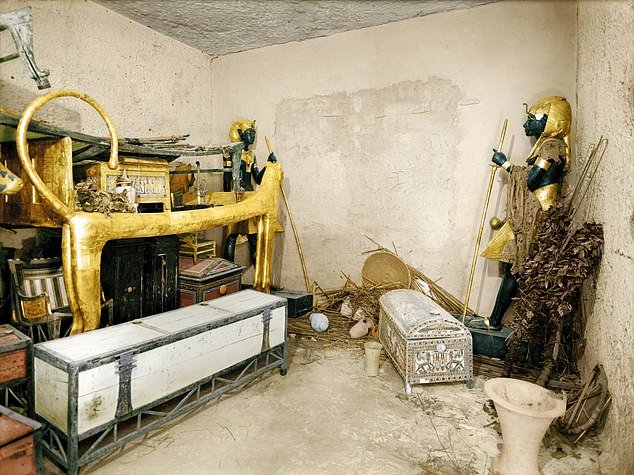
The investigation found that the cause was radiation poisoning from natural elements and toxic waste deliberately placed in the locked vaults
However, inscriptions found in other burials throughout Egypt suggested that the ancient people knew about the toxins.
The text contained areas that were ‘forbidden’ because of ‘evil spirits’.
The study, published in the Journal of Scientific Explorationexplained that high radiation levels were also documented in Old Kingdom tomb ruins at two sites in Giza and in several underground tombs in Saqqara.
The same conclusion was also found everywhere the tomb of Osiris in Giza.
Fellowes noted that ‘intense radioactivity was associated with two stone coffers, mainly from the interior.’
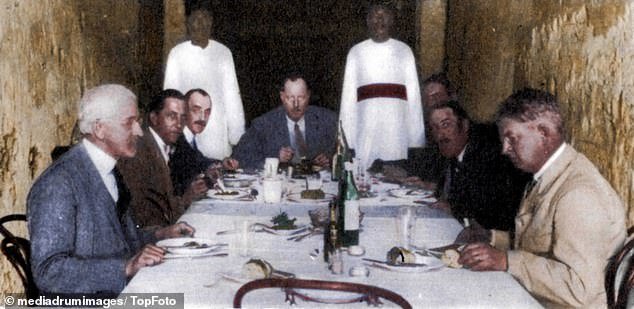
Pictured is a luncheon in a tomb, present are JH Breasted (died from exposure to X-rays, Harry Burton (died from diabetes), A Lucas, AR Callender (died from ill health), Arthur Mace (died from poison) – all no older than their fifties
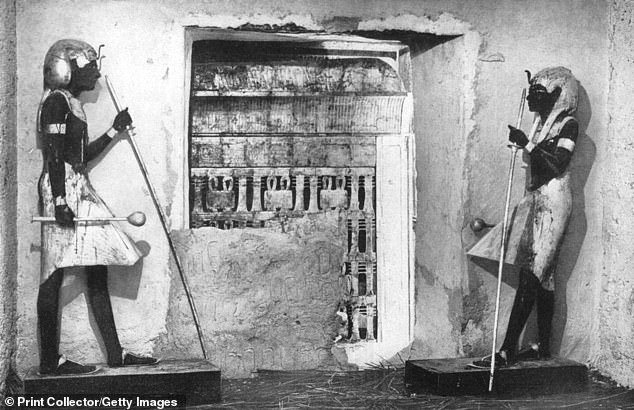
The first view of the grave when the door was broken down
Professor Robert Temple noted that the treasure chests were made of basalt and determined that they were “a point source of radiation, in contrast to the general traces of natural levels (of radon) from the surrounding limestone soil.”
Other studies have measured radon gas directly at various locations in graves in Saqqara.
Radon gas is an intermediate product of uranium decay, with a half-life of 3.8 days.
Environmental radon concentrations were identified at six locations in the ruins of Saqqara: the South Tomb, the warehouses of the Pyramid of Djoser, and the burial tunnels of Serapeum.
Thousands of jars excavated from beneath the Step Pyramid in the 1960s contain up to 200 tons of unidentified substances that have yet to be identified – suggesting that toxins were buried with mummified remains.
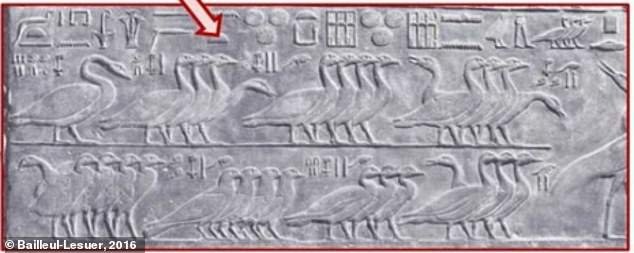
However, inscriptions found in other burials throughout Egypt suggested that the ancient people knew about the toxins. The text included areas that were ‘forbidden’ due to ‘evil spirits’ (photo)
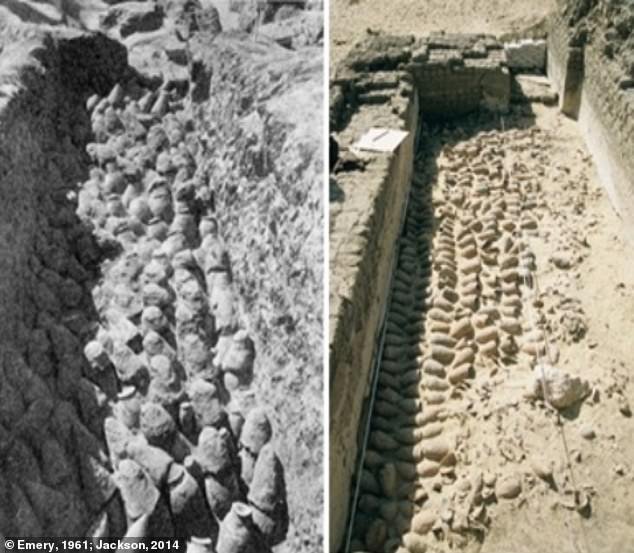
Thousands of jars excavated under the Step Pyramid in the 1960s contain up to 200 tons of unidentified substances that have yet to be identified
“Reported strong radiation (as radon) in burial ruins is loosely attributed to the natural background of the original rock,” Fellowes said.
“However, the levels are unusually high and localized, which is not consistent with the characteristics of the limestone bedrock but is indicative of some other unnatural source(s).”
On November 4, 1922, Carter’s group found steps leading to Tutankhamun’s tomb and spent several months cataloging the antechamber.
The team opened the burial chamber and discovered the sarcophagus in February of the following year.
The tomb is considered one of the most lavish discovered in history, filled with precious objects to aid the young pharaoh on his journey to the afterlife.
The treasure trove of grave goods included 5,000 objects, including solid gold funeral shoes, statues, games and strange animals.
The small size of Tutankhamun’s burial chamber, given its position in Egyptian history, has baffled experts for years.
Tutankhamun’s burial chamber is the same size as an antechamber, rather than a tomb fit for an Egyptian king, for example.
